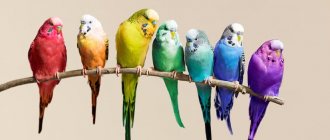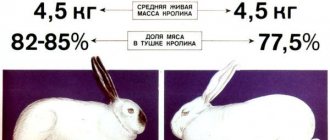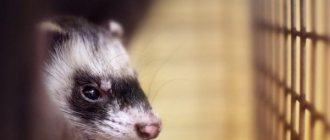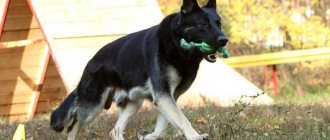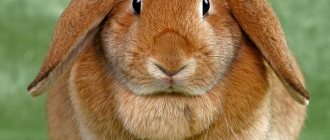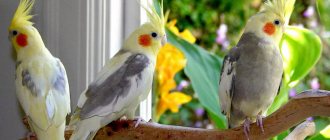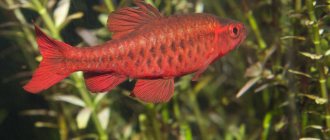- How often can parrots mate at home?
- What to do if the female cannot lay an egg?
- Is it necessary to choose a pair for a parrot based on color?
- What to do if the female plucks the chicks?
Budgerigars are gregarious birds and in the wild they live in fairly large groups.
In captivity, it is also better to keep them in pairs or small groups. In order for parrots to breed in captivity, they must be kept in good conditions, allowed to fly a lot, fed with high-quality food and given mineral and vitamin supplements.
Budgerigars become sexually mature at 6-7 months. But for mating you need to wait up to 1-1.5 years. The most favorable time for reproduction is from mid-spring to the end of summer. It is also possible to get offspring in autumn and winter, but for this you will need more effort to create favorable conditions. First you need to choose a pair for your pet.
Adult females are always dominant over adult males. In nature, females choose their own boyfriend and mate with the chosen one. If you have a sexually mature male living with you, it is better for him to choose a young female 3 months old. Or to a sexually mature female of an experienced male. Then it will be easier for them to become friends, and the success of mating will increase. Subsequently, such couples can live together all their lives, be faithful to each other and give birth to offspring.
The cage must be prepared for “family life”. Set up a house or hang a nest box, put fresh straw and sawdust in it. The female will do the rest - she will complete the nest and make a hole for the eggs.
If a couple has been living together for a long time and you have not seen the moment of sexual intercourse, then the appearance of eggs may come as a surprise to you. If you know exactly when sexual intercourse occurred, then expect an increase in 8-10 days. Usually the female incubates the eggs, and the male sits next to the nest and brings food to the female.
Budgerigars lay from 3 to 12 eggs. Having laid 1 egg, the female begins to incubate the eggs and lay the rest approximately 1 day later each. From the moment the egg is laid until the chick hatches, about 17-18 days pass. The chicks hatch weak, almost hairless and blind. They are not able to find food themselves, so the female puts food she regurgitates into their beak. By the age of a week, the chicks' eyes open, gradually they become covered with down, by 2 weeks the stumps of flight and tail feathers appear, by a month they are already completely covered with feathers and become more like adult parrots only in miniature. After another week, the parrots begin to fly and can find their own food. At this point they are ready to leave the parental nest.
When are parrots ready to breed?
In budgerigars, the mating season begins at five months from birth, sometimes earlier. At the same time, birds should not be allowed to reproduce, since sexual maturity in parrots occurs at the age of one and a half years. If breeding is allowed earlier, the female may die when laying her first offspring.
Peak fertility occurs in the second to fourth year of life. Budgerigars retain an active ability to reproduce until they are eight to nine years old. With good care and infrequent breeding, a pair can reproduce at a more mature age.
The appearance of chicks in birds
The incubation period for chicks is different for all bird species. In finches, weaverbirds, munias and dandelions it is 12-13 days, in canaries and nightingales it is 14. The female white-breasted toucan waits 20 days, the budgerigar - 18 days. Chicks of grass parrots and cockatiels appear after 19 days of incubation. Rosella has a waiting period of 26 days. In ring-necked parrots, babies hatch on the 23-28th day. In the female cockatoo parrot, the first chicks appear after 25-28 days, in the loris after 24-26. For lovebirds, the incubation period is 23 days. Grays and nobles have 29-30 days.
The female may be ready to reproduce again in 1.5-3 months, depending on the species. Here it is important to understand that the bird must feed the first offspring, teach it to eat, get food, and only after that can it think about the second offspring. Frequent oviposition exhausts the female and makes her sick.
If you do not want chicks to be born, then it is not at all necessary to place birds of different sexes in different cages; it is enough not to stimulate them to reproduce offspring. However, it must be taken into account that in such a situation there is still a possibility of offspring, such is the law of nature.
Preparing for the mating season
To successfully reproduce, budgies need to find a partner.
These parrots are different from most other birds in that sympathy is important to them.
Some artificially created couples may not begin breeding offspring for several years, as there is antipathy. Therefore, it is worth selecting from young animals those individuals that have already independently formed an alliance.
They will make good producers.
The time of year is important. The favorable period for reproduction is warm and sunny weather, that is, healthy offspring grow in late spring, summer and early autumn. Winter and late autumn require the creation of additional conditions.
These include:
- amount of light up to 16 hours a day due to electric lighting;
- the room temperature is positive, optimally 18-20°C;
- the cage should contain fresh greens, branches of rowan, linden and other trees.
Even if these conditions are met, offspring produced in early spring or winter may not receive enough light and vitamins, which makes their growth painful.
How to choose a partner for a budgie
Budgerigars breed from one year to 8-9 years. At other ages, these birds should not be used for breeding, otherwise you risk getting inferior offspring, that is, with developmental defects.
It is best to plan the choice of a pair and a “romantic meeting” of two birds for the fall. At the same time, you should not use a male and a female of the same origin; you should prefer birds from different places. You shouldn’t choose random birds, especially for ladies. It is important to pay attention to fatness, full plumage and activity. Only if all these points are in order, you can start dating.
The sex of a budgerigar can be determined as early as 3-4 months by the color of the cere. In males it is bright blue, white and brown usually in girls. To get offspring, it is better to buy a pair or several parrots at once. If you want to find a partner for an existing pet, you will have to put up with certain difficulties.
Well, for starters, the newcomer will have to be quarantined for at least a month. Then the male and female will have to get used to each other, for this they will need time. Often these pets are placed in different cages nearby so that they can see each other and be interested.
When you put a male and a female in the same cage after such “grinding in,” it will immediately become clear from their behavior whether they are a suitable pair. If the birds are not aggressive, do not attack the partner, but on the contrary show interest, then everything is in order. Moreover, if the male pays attention to his girlfriend all the time, spends all the time with her and constantly courtes her, then successful reproduction is very likely.
But it is best if future parents live in a group of similar couples - two or three. The fact is that budgies, in principle, live in small groups. However, for such a team of birds you will need a large cage, do not skimp on it. Only by creating a spacious and comfortable home for your pets will you get beautiful and healthy offspring.
Couple behavior
The behavior of budgerigars during the mating season consists of a number of rituals and ceremonies. In each specific situation, parrots take appropriate poses and also make sounds. What happens during sympathy?
The birds feed each other, the female and the male clean their partner’s feathers, clean the feathers on their heads, pinch their legs and tail, and kiss. The mating games of budgerigars continue until the breeding period, that is, hatching of the chicks.
Budgerigars are considered temperamental birds, owners should take this into account when interacting with a couple. For example, a male may be jealous of a female; he does not allow her to be fed, since during the mating season only he should feed her. At this time, previously peaceful budgies are capable of biting if you stick your hand into the cage.
After laying the first egg, the female may become aggressive towards others. She can defend her house, become jealous of her partner, and peck at him. Fights occur between females. For this reason, experts advise keeping one pair of parrots in a cage.
Peculiarities of behavior of birds during the mating season
The mating season is manifested by appropriate behavior:
- the male begins to actively court the female and feed her;
- birds make characteristic sounds;
- the female begins to look for small twigs and objects suitable for bedding eggs (she may sit at the bottom of the cage);
- the couple is constantly kissing, plucking feathers on their heads, pinching their paws, tails, and chirping.
Remember!
Mating behavior is observed until the moment of laying. After this, the female spends a lot of time in the nest, and the male continues to care for her and brings food. Reproduction occurs throughout the warm period. In winter, the birds recover, and with the arrival of spring the process begins anew.
Before breeding, you should make sure that the parrots are healthy, well fed and will be able to breed healthy offspring. If necessary, additional vitamins are included in the diet. Proper preparation and compliance with all conditions will allow you to get small birds at home.
Warmth and light are needed
To breed parrots in winter, it is necessary to increase daylight hours to 15 hours through additional lighting. The air temperature in the room is maintained in the range of 18-20 degrees. Light and warmth have a positive effect on the birds, which immediately begin to mate. It happens quickly. So that the owner may not even notice.
Suitable conditions encourage budgerigars to bear offspring twice a year; more often is undesirable. Birds stay together forever and do not look for another partner. Reproductive age lasts up to 10 years.
As for large parrots (Greys, Amazons), the preparation for them at home is similar, but the sizes differ (40x45x85 cm). Inside, the nesting structure in the shape of a hollow is protected from a powerful beak by a metal mesh. Instead of shavings, bark is poured onto the bottom. The process of courtship and breeding of birds usually begins in the first months of winter.
Conditions for reproduction
It is advisable for a breeder who decides to breed budgerigars to have several pairs. This will allow, in case of possible problems with the chicks or clutch, to save the offspring and preserve the health of the adults.
Right to breed
Breeding budgerigars at home is not regulated by law; anyone can do it. But to officially register his activities, the breeder must have a license, which is issued by the Society of Bird Lovers. A person needs to confirm that he has knowledge about the breeding and maintenance of budgerigars.
It is the responsibility of veterinarians to check birds for psittacosis. This viral infection can infect not only animals and birds, but also humans. If the test does not reveal this disease, the owner receives official permission for breeding. He is given permanent rings containing information about the breeder, the serial number of his bird, the date and time of registration. During disease outbreaks, this makes it easier to track the location of parrots.
Choosing the right pair
To get healthy offspring, you need to organize the correct selection of a pair of wavy birds. They must be from different parents to prevent the development of genetic diseases in the chicks. How to understand that a male and a female are suitable for each other?
Both parrots should be healthy, active and well-fed. Weak or elderly birds often lay unfertilized eggs. Puberty of females occurs in the second year of life. In males, this period begins a little earlier, from ten months of age. The peak of fertility in wavy birds is observed at the age of 2–4 years. Although parrots breed up to 10 years old.
This is interesting! A budgerigar remains attached to its partner for life. Without mutual sympathy, reproduction does not occur.
Suitable period for breeding
The optimal time for breeding wavy plants at home is the summer months, from June to September. This is the part of the year when parrots get enough sunlight and vitamins. In other periods, they may be weakened due to a deficiency of substances necessary for the body. And this can affect the health of the offspring.
If breeding of parrots is planned for the winter or spring months, the birds must be provided with enhanced nutrition with fresh herbs. At least 14 hours of daylight are required; illumination with a special lamp is allowed. The air temperature must be at least 23 degrees.
Parrot mating process
What conditions need to be created
In addition to selecting a pair, the breeder should think about creating conditions for reproduction. To do this, you need to choose a cage that is suitable in size for the birds. The size of the housing for one pair of wavy plants is 80 cm in length, 40 cm in height and 35 cm in width. If one cell contains several pairs, then these dimensions should be larger.
Females need houses with nests where they can hatch their offspring. When the parrot begins to lay eggs, the cage is placed in a quiet corner so that the bird is not disturbed. The room temperature must be maintained at least 20 degrees. At the same time, heat and stuffiness should not be allowed, as this poses a threat to the embryos.
Feeding parrots during the breeding season
The budgerigar's menu includes grains and seeds, as well as fruits and vegetables.
To stimulate the sexual instinct, the diet should contain the following foods:
- low-fat cottage cheese;
- greenery;
- sprouted grains;
- egg white;
- special mineral supplements.
When a female parrot lays eggs, she requires an increased diet. Products high in vitamin E are very useful. Experienced breeders advise feeding their pets a mixture of cottage cheese, eggs, carrots and sprouted grains.
It is important to know! Obese or underweight birds are not suitable for breeding. The pair must be fattened before breeding, but not excessively.
Preparing the cage and nest
Breeding budgies requires careful preparation of the cage and all its elements. For example, a female, preparing for maternal responsibilities, begins to gnaw on everything she can reach. To avoid damage to cage parts and other accessories, it is recommended to put a vitamin stone and several twigs. Let her fulfill her need on them.
Each specialist recommends his own cage sizes. However, the minimum parameters are 40x30x40 cm. Insufficient space can interfere with the appearance of offspring. And if it is born, they may experience the aggression of their parents.
The cage is placed at eye level of the owner, this makes the birds safer and calmer. You should not place it near a microwave oven or gas stove.
The room where you decide to keep the parrots should be well ventilated, but at the same time avoid drafts. As soon as the parrots begin the nesting period, do not move the cage, do no repairs in this room, and do not produce sounds unusual for birds.
We recommend reading: Ticks on budgerigars: types and treatment
For the hygiene of the mother and future offspring, disinfection and sterilization are necessary: wipe with “White” and rinse the drinking bowl, feeder, and cage in warm water. The nest is washed using baby liquid soap, dried and heated in the oven at a temperature of about 130 degrees for 40 minutes. Mix sawdust with chamomile. This will repel gamas ticks.
Egg laying and incubation
Disinfection
Before the start of the nesting season, parrots are removed from the cage and subjected to thorough cleaning and disinfection. The procedure must be repeated after each hatching of the chicks, when they have already left the house.
While nursing the babies, the nest box is cleaned once a week, replacing the sawdust with new ones. However, there are birds that react painfully to this and may even abandon their clutch or brood. Such birds should not be disturbed again until the young birds fly out.
Determination of egg quality
A fertilized egg is usually identified by its appearance. Its shell is matte, grayish-white. Unfertilized - yellowish, sometimes simply spotted, shiny.
Incubation period for budgie eggs
In wavy birds, the chicks hatch on the 18-19th day after the female begins incubating the eggs. In other species this happens later. For example, for lovebirds and cockatiels - after 21-22 days, and for rosella - after 22-23. In large birds, the incubation period can reach 30 days.
general information
In the wild, birds live in large flocks and independently select a mate upon reaching sexual maturity (6–7 months). But before the female allows the male to approach her, she carefully carries out a selection, assessing beauty, physical capabilities and mating games. Only a healthy couple can produce offspring capable of survival and further spread of the species. In addition, mating of parrots occurs in a certain season and under favorable conditions.
These instincts are inherent in them from birth, therefore, when keeping feathered pets at home, the creation of external factors and the correct selection of pairs falls on the shoulders of the owners.
Additional terms
Conditions for breeding
Before breeding parrots in captivity, three conditions must be met.
- Daylight hours should be long. For most species during the nesting period it is about 15 hours. Its duration should be increased gradually, adding an hour and a half for ten days.
- Properly formulated diet. In the wild, an abundance of food is a sign of the most favorable time for reproduction, a signal for the beginning of the mating season. Therefore, pets need a varied diet with sufficient vitamins and minerals.
- "Nesting landscape". Without a device that replaces a natural hollow, it will not be possible to breed parrots in captivity.
Conditions for breeding parrots
Depending on the breed, additional conditions may be required. Thus, to breed medium-sized parrots, you need an aviary, preferably located in the open air, and some species of birds also require increased air humidity and a source of artificial lighting.
Parrot diet
During the period of incubation of eggs and nursing of chicks, new parents need to be fed. After about two weeks, an egg-carrot mixture and cottage cheese are added to the diet. Many breeders give their female dogs a roll soaked in milk. It is an additional source of calcium and energy. During the laying period, birds need to consume more greens, sprouted grains, vegetables and fruits.
Read also
Rio food for budgies reviews
Pros and cons of parrot business
Breeders begin to resettle the young when the chicks learn to eat on their own. At the same time, the dose of the egg mixture decreases, and the grain increases. At one and a half months, seeds are poured into the feeder 2-3 times a week, and at two months - once. For better absorption, pour the dry mixture with cold water for 8-10 hours.
Breeding budgies does not require a lot of money. This can be done even in a small apartment. The next plus is the high demand in the market. The disadvantages include risks - the death of birds and possibly low profits due to competition.
To weigh your own options, we recommend starting with one pair of birds. After all, even this amount presupposes abstinence from long trips and requires constant presence with your pets. If you manage to cope, then later, if you wish, you will switch to breeding expensive breeds. For example, Amazon costs 70-80 thousand rubles for 6 months. Cockatoo chicks are sold for 90-100 thousand. The same price for macaws.
Calcium required
When an egg is formed inside the female, calcium rapidly leaves the body as the shell grows. It is necessary to include sepia poultry or special food in the menu, where they are included, for example, “Prestige (premium)”. A lack of calcium makes the developing eggs soft, which is dangerous for the health of the female.
From the first mating of parrots to the start of oviposition, it takes from 7 to 40 days. During incubation, do not feed your bird wet egg food. This product stimulates the formation of new eggs in the female’s body. But they will be “empty” (unfertilized). In addition, the expectant mother will become exhausted.
As soon as the female begins to hatch chicks, switch the bird exclusively to grain. Now the process of egg formation is completed, the body does not waste nutrients. A dry diet will help in the future: parrots will be more willing to accept additional food.
Necessary nesting accessories
A special box or nest is installed in the cage.
When choosing an accessory, you need to take into account the type and size of your pets. The height at which the device is suspended depends on these factors. Depending on the design of the cage, it is attached inside or outside.
Nesting accessories required
The sizes of artificially created nests for different species of parrots are shown in the table.
| Parrot species | Diameter of the tap hole or manhole, cm | Internal dimensions, cm | |||
| Nest house | Duplyanka | ||||
| Height, cm | Floor size, cm | Height, cm | Diameter, cm | ||
| Wavy | 5 | 20 | 15x15 | 26 | 16 |
| Lovebird | 6 | 25 | 17x17 | 30 | 17 |
| Flat-tailed | 7 | 35 | 25x25 | 35 | 25-30 |
| Ringed | 8 | 35 | 25x25 | 35 | 20-30 |
| Nandaya, Yendaya and Alexandrian | 9 | 45 | 40x40 | 45 | 40 |
| Small species: cockatoos, amazon and grays | 10 | 70 | 50x50 | 70 | 50 |
| Large species: cockatoo, macaw | 20 | 100 | 70x70 | 100 | 70 |
Preparing to create a nest
Nest houses are made from dry boards, and a nest box is made from a piece of a hollow tree trunk. A hole is made at the bottom for masonry. Its depth is necessary so that the eggs do not roll out and the embryos do not die. The bottom size is needed no smaller than that indicated in the table, otherwise the growing chicks may crush each other.
Dry sawdust is used as bedding. When keeping flocks, the number of devices for breeding birds should be slightly greater than the number of pairs, so that the birds do not fight for space.
Lovebirds build real nests in the wild, so they don’t need a hole in the floor or sawdust. However, several holes with a diameter of 6-8 mm are drilled in the bottom of the box for air circulation.
Growth and feeding of chicks
The mother parrot first feeds the hatched babies with milk from the crop. The product is formed from epithelial cells that have exfoliated and contains mucus and particles of digested food. During this period, the egg mixture and sepia are necessary for the parent, otherwise the bird will begin to pluck feathers from newborn babies.
On days 3-4, the mother gives the babies food softened in the crop. At the end of the first week, the chicks' fluff grows and their heads rise. At this time, the male joins in the feeding. After 10 days, the eyes are fully open, and after two weeks, feathers grow on the wings and head. On the 25th day, the weight reaches 40-50 g. The main type of nutrition for young animals is egg mixture.
At 30-35 days, parrot chicks look like adults, and after 40 days they try to fly with uncertain attempts. At this time, a complete transition to adult food is made. Young parrots are looked after by their parents for another 2-3 months. But it’s time to think about relocating the cage’s inhabitants.

